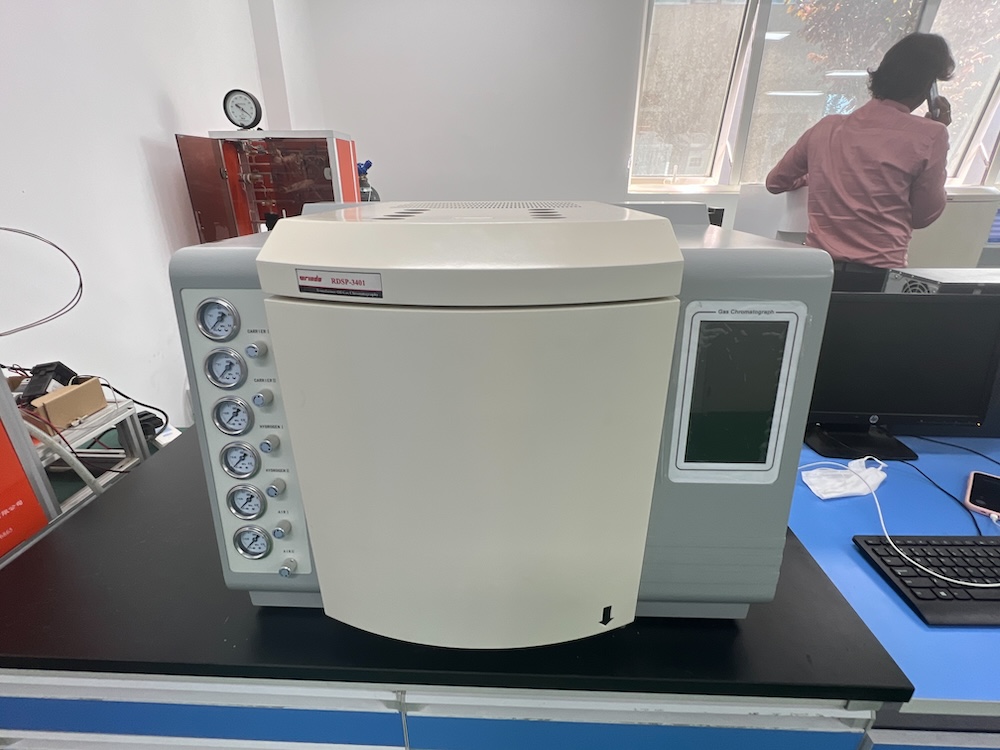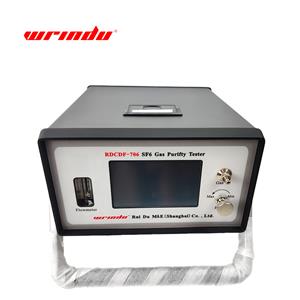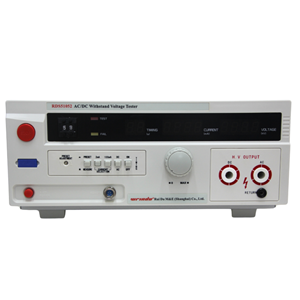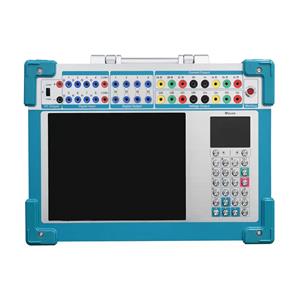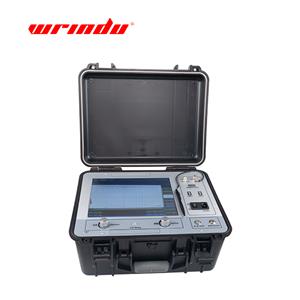Working Principle Of Transformer Oil Chromatograph Analyzer
Transformer oil chromatograph is an important analytical tool that uses chromatography to quantitatively and qualitatively analyze the gas components dissolved in transformer oil. For power generation and supply companies, this instrument is a key means to monitor whether oil-filled electrical equipment has potential overheating, discharge and other faults, ensuring the safe and stable operation of the power grid. At the same time, it is also an important tool for oil-filled electrical equipment manufacturers to conduct factory inspections of their products.

The Working Principle Is Summarized As Follows:
1. Carrier gas supply: When the instrument is running, a carrier gas (usually H2, He, N2, Ar, etc.) needs to be introduced as the mobile phase. The carrier gas flows out of the gas cylinder, passes through the pressure reducer and gas purification, and enters through the carrier gas inlet on the back of the instrument.
2. Mobile phase regulation: The carrier gas passes through the pressure regulating valve, three-way joint, needle valve, pressure gauge and other components and enters the vaporization chamber at a stable flow rate.
3. Sample vaporization: Use a micro-injector to inject the liquid sample into the vaporization chamber, and the sample is converted into a gas sample in the vaporization chamber, and then enters the chromatographic column with the carrier gas.
4. Chromatographic separation: The filler filled in the chromatographic column or the high molecular organic compound coated on the inner wall of the capillary column is used as the stationary phase. The components in the mixture are distributed multiple times between the stationary phase and the mobile phase or separated according to the difference in the adsorption capacity of the adsorbent for different components.
5. Detection and signal conversion: The separated components flow into the detector in turn, and their concentrations are converted into electrical signals. The signal can be recorded directly or processed electronically and recorded by a secondary signal recording instrument or a chromatographic data processor.
6. Qualitative and quantitative analysis: When using a hydrogen flame ionization detector, fuel gas (H2) and supporting gas (Air) must also be introduced.
Principle of Oil Chromatography Analysis Technology:
Oil chromatography is a separation and analysis technique for multi-component mixtures. It is based on the differences in boiling points, polarity and adsorption coefficients of the components in the sample to effectively separate them in the chromatographic column and perform qualitative and quantitative analysis.
Application Process Of Transformer Oil Chromatograph:
1. Sample introduction: Gas is used as the mobile phase (carrier gas). After the sample is vaporized at the injection port, it is carried by the carrier gas into the packed column or capillary column.
2. Component separation: The physical and chemical properties of the components in the sample are used to separate them in the chromatographic column.
3. Detection and data transmission: The separated components are detected in sequence by the detector, and the data is transmitted to the chromatographic workstation through the serial port or network.
4. Result recording and analysis: The chromatographic workstation records the transformer oil chromatogram, analyzes it, and finally generates an analysis report for each component.
Equipment Recommend
1. Equipped with a cutting-edge 10/100M adaptive Ethernet communication interface and an integrated IP protocol stack, this instrument enables seamless long-distance data transmission via intranet or Internet. This feature streamlines laboratory setup simplifies configuration, and enhances data management convenience.
2. The instrument features three independent connectivity processes, allowing for direct links to local processing (laboratories), department heads (such as quality inspection, production directors, chiefs), and supervisory bodies (like environmental protection bureaus, and technical supervision bureaus). This ensures that decision-makers have easy access to real-time instrument monitoring and data analysis results.
3. The included NetChromTM workstation supports the simultaneous operation of multiple chromatography systems, facilitating data processing and cost allocation. This feature streamlines document management and significantly reduces the laboratory's investment and operating expenses.
4. The instrument can connect to manufacturers over the Internet for remote diagnostics and program updates (subject to user authorization), ensuring continuous support and updates.
5. Users can customize the naming of temperature control areas, adding a personal touch and enhancing ease of use.
6. Operating in a multiprocessor parallel mode, the instrument offers enhanced stability and reliability. It can be equipped with up to three types of detectors simultaneously, accommodating complex sample analyses.
7. The modular structure design of the instrument provides clarity, ease of upgrades, and protection of investment effectiveness.
8. The new microcomputer-based temperature control system boasts high precision, reliability, and anti-interference capabilities. With eight fully independent temperature control systems, it can perform sixteen-step temperature programming, expanding the range of sample analyses. The innovative post-column oven automatic door system further improves temperature control precision and speeds up heating and cooling processes.
9. The built-in chromatography system operates with low noise and high-resolution 24-bit AD circuitry, offering storage capabilities and baseline subtraction functions.
10. The randomly included workstations are compatible with both Chinese and English versions of Windows XP, Windows 2000, Windows 7, and Windows 8 operating systems.
11. The chromatographic system, boasting fully independent intellectual property rights, features a standard MODBUS/TCP interface, allowing for effortless integration with DCS systems.
For detailed parameters and details of the product, please click RDSP-3401.
For the latest quote, please contact us.

